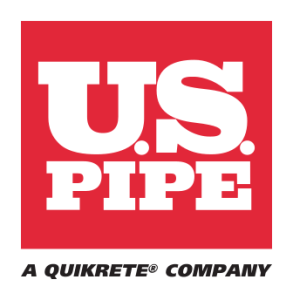“Take care of the people, the products, and the profits, in that order.”
Ben Horowitz
THE ART OF LEADERSHIP
People first, products great, profits follow with purpose!
People power products, and excellent products power profits. The order matters. When you invest first in your people, you unlock judgment, creativity, and ownership. That energy shows up in thoughtful design, quality decisions, and reliable delivery. Profit then becomes the natural result of a healthy system, not the fragile goal of a tired team.
Operationalize this priority. Map strengths and aspirations. Clarify outcomes and the definition of done. Assign single owners with realistic dates. Provide coaching, tools, and customer access. Replace long updates with brief demos and weekly reviews that track cycle time, quality, and adoption. Share decisions openly so learning travels.
Lead visibly every day. Keep promises to the minute, listen first, and remove one obstacle within a day. Give credit publicly and feedback privately. Celebrate progress that helps customers. As care meets standards, people grow, products improve, and profits follow. The culture you build becomes a competitive advantage that others cannot copy.
Over ninety days, prioritize people, strengthen products, track outcomes weekly, remove obstacles daily, and let profits reflect disciplined leadership steadfastly.
COMMERCIAL CONSTRUCTION
How does U.S. Pipe safeguard water by uniting craftsmanship, innovation, and service?
Every drop that reaches a tap carries a promise. U.S. Pipe helps keep that promise by crafting ductile iron pipe, fittings, and joint systems that stand up to time and terrain. Their purpose is simple and vital: deliver dependable pathways for clean water so neighborhoods grow healthier and stronger.
Quality begins with people who plan, inspect, and take safety personally. With rigorous manufacturing standards, protective linings and coatings, and engineering support from design through installation, they turn complexity into clarity. The result is long service life, predictable performance, and confidence in the ground before concrete is poured.
Partnership multiplies impact. U.S. Pipe collaborates with utilities, engineers, and contractors to solve problems early, meet demanding schedules, and steward budgets responsibly. When you build with durable materials and a culture of accountability, water systems become quieter, safer, and more resilient, and communities gain the freedom to plan further ahead.
Reliable ductile iron solutions, expert support, and relentless safety help communities secure clean water, reduce risk, and build resilient infrastructure.
INFRASTRUCTURE INDUSTRY
Will the 81 viaduct demolition reshape Syracuse traffic and reconnect neighborhoods soon?
This week in Syracuse, crews begin taking down segments of the elevated I-81 viaduct and shifting traffic to temporary routes. Night work limits congestion while excavators and cranes remove deck sections near downtown. Short rolling closures, noise monitoring, and dust control will accompany demolition as the Community Grid program advances.
Viaduct removal happens in stages. Crews first saw-cut concrete slabs, lifted them to trucks, then torch-cut and removed steel girders. Columns are broken down to the foundation with protective shielding over streets and utilities. Much of the concrete and rebar is recycled, reducing landfill use and trucking needs.
As structures come down, new surface streets, safer crossings, and modern utilities will replace aging ramps and tight merges. Signals, lighting, and drainage upgrades calm speeds and improve access for buses, bikes, and emergency services. The goal is steadier travel on bypass routes now and a healthier, more connected downtown long term.
Check detours, plan extra time, follow signs, and give crews space to reduce delays and keep downtown demolition zones safe.
RESIDENTIAL RESEARCH
Will energy code debates mandate heat pump readiness in homes starting in 2027?
This week, code committees are debating residential proposals that would require basic heat pump readiness and other electrification rough-ins. Ideas on the table include reserved panel capacity, a dedicated 240-volt circuit to the mechanical room, line set pathways, and condensate provisions. Supporters argue prewiring is cheap during construction and prevents costly retrofits; critics warn about complexity in smaller markets.
Remember how model codes flow. These hearings produce committee votes, then public comments, and final votes next year. States and cities decide whether and when to adopt, often with amendments. That means any new readiness rules would appear locally after publication, typically 12 to 24 months later, and will coexist with existing gas allowances in many jurisdictions.
What should builders do now? Review electrical one-line diagrams and panel schedules; reserve two spaces for a future 240-volt circuit; and show conduit routes on the plans. Coordinate pad locations and attic or closet clearances with HVAC trades and raters. Document costs so bids reflect minor rough-ins today rather than expensive change orders later.
Plan panels, circuits, and pathways now; track adoption calendars and bid-readiness rough-ins to avoid costly retrofits and delays later.
TOOLBOX TALK
Lifting with Cranes and Rigging Safety
Good morning, Team!
Today, we are focusing on safe crane operations and rigging practices to prevent dropped loads, tip-overs, and strikes.
Why It Matters
Each lift involves suspended loads that can cause severe injuries or property damage if improperly planned or executed. Safe lifting requires coordination, clear signals, and careful inspection of all equipment.
Strategies for Safe Lifting
Planning the lift: Review the lift plan with the operator, rigger, and signal person. Verify load weight, center of gravity, and travel path. Confirm ground stability and clearance from overhead obstructions or power lines.
Equipment inspection: Check hooks, slings, shackles, and spreader bars for damage, wear, or deformities. Ensure hooks have safety latches and slings are tagged and rated for the load. Remove defective gear from service immediately.
Rigging setup: Keep sling angles above 60 degrees where possible to reduce tension. Balance the load and avoid side pulls. Use softeners or edge protectors on sharp corners to prevent slings from cutting.
Communication and control: Assign one qualified signal person. Use standard hand signals or radios. Stop all motion if communication is lost. Maintain exclusion zones under and around the suspended load.
During the lift: Raise the load slowly to test balance. Never stand under or walk beneath suspended materials. Land loads on stable cribbing and clear of personnel.
Discussion Questions
What lifts are scheduled today, and what rigging gear will be used?
Who is the signal person, and how will communication be maintained?
Conclusion
Thorough planning, sound rigging, and clear communication prevent accidents.
Plan it, check it, lift smart!





